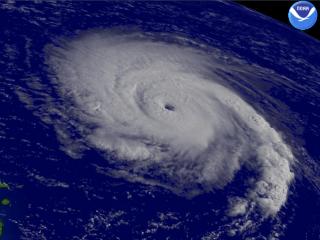eyewall dynamics, as well as others, called MIMIC which stands for Morphed Integrated Microwave Imagery at CIMSS. It uses successive microwave images to create an animation that lets meteorologists further investigate a hurricane's eyewall. For example, this MIMIC animation of Frances from August 30
shows the storm undergoing an eyewall replacement cycle. On these animations, the yellows and reds represent the strongest thunderstorms, and in the case of Frances, you can see a second, larger eyewall form around the inner eyewall. As I mentioned, once this occurs, hurricanes usually weaken which Frances did. During this cycle, Frances went from a Category 4 storm with winds of 130 mph just prior to this animation to a Category 3 with 115 mph winds at the end of this animation, as this storm history shows.

